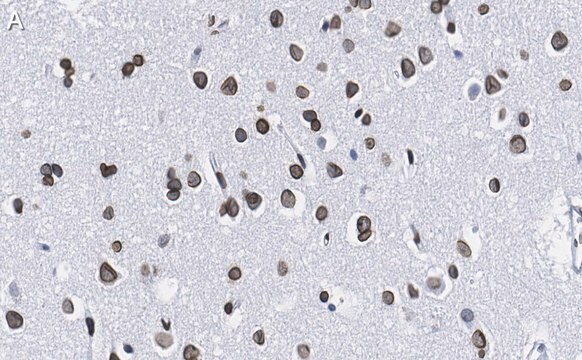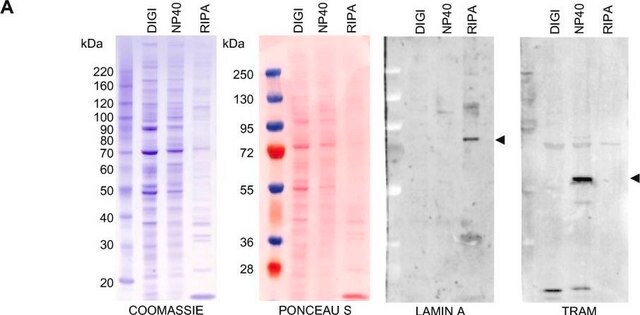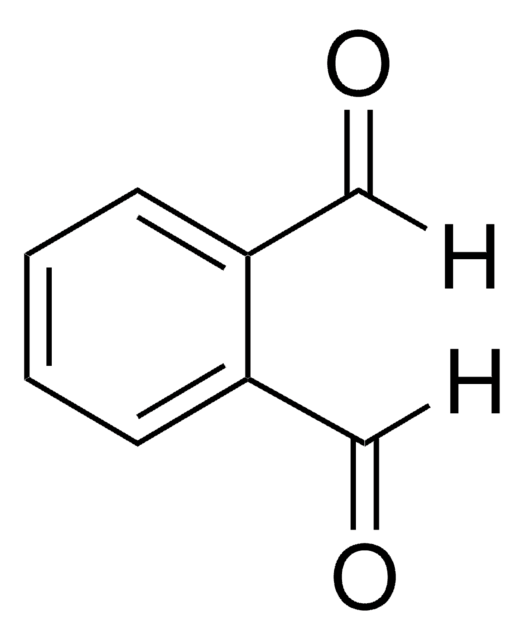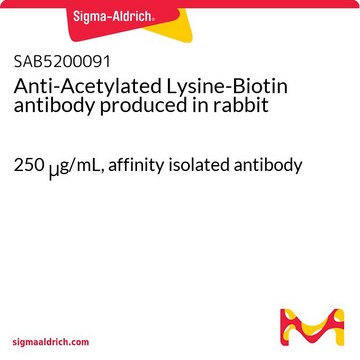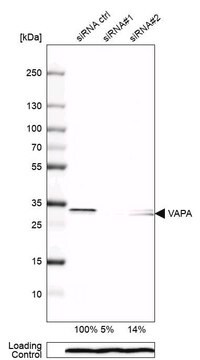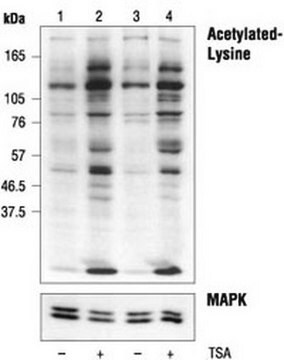05-714
Anti-Lamin A/C Antibody, clone 14
clone 14, Upstate®, from mouse
Synonim(y):
Anti-CDCD1, Anti-CDDC, Anti-CMD1A, Anti-CMT2B1, Anti-EMD2, Anti-FPL, Anti-FPLD, Anti-FPLD2, Anti-HGPS, Anti-IDC, Anti-LDP1, Anti-LFP, Anti-LGMD1B, Anti-LMN1, Anti-LMNC, Anti-LMNL1, Anti-MADA, Anti-PRO1
About This Item
Polecane produkty
pochodzenie biologiczne
mouse
Poziom jakości
forma przeciwciała
purified immunoglobulin
rodzaj przeciwciała
primary antibodies
klon
14, monoclonal
reaktywność gatunkowa
canine, chicken, human, rat, mouse
producent / nazwa handlowa
Upstate®
metody
immunocytochemistry: suitable
western blot: suitable
izotyp
IgG
numer dostępu NCBI
numer dostępu UniProt
Warunki transportu
dry ice
docelowa modyfikacja potranslacyjna
unmodified
informacje o genach
human ... LMNA(4000)
Opis ogólny
Specyficzność
Immunogen
Zastosowanie
This antibody has been reported by an independent laboratory to detect Lamin A/C in human endothelial cells.
Cell Structure
Cytoskeletal Signaling
Jakość
Western Blot Analysis:
0.5-2 μg/mL of this antibody detected Lamin A/C in 20 μg of RIPA lysates from A431 cells.
Opis wartości docelowych
Powiązanie
Postać fizyczna
Przechowywanie i stabilność
Komentarz do analizy
Positive Antigen Control: Catalog #12-301, non-stimulated A431 cell lysate. Add 2.5µL of 2-mercaptoethanol/100µL of lysate and boil for 5 minutes to reduce the preparation. Load 20µg of reduced lysate per lane for minigels.
Inne uwagi
Informacje prawne
Oświadczenie o zrzeczeniu się odpowiedzialności
Nie możesz znaleźć właściwego produktu?
Wypróbuj nasz Narzędzie selektora produktów.
polecane
Kod klasy składowania
10 - Combustible liquids
Klasa zagrożenia wodnego (WGK)
WGK 1
Certyfikaty analizy (CoA)
Poszukaj Certyfikaty analizy (CoA), wpisując numer partii/serii produktów. Numery serii i partii można znaleźć na etykiecie produktu po słowach „seria” lub „partia”.
Masz już ten produkt?
Dokumenty związane z niedawno zakupionymi produktami zostały zamieszczone w Bibliotece dokumentów.
Nasz zespół naukowców ma doświadczenie we wszystkich obszarach badań, w tym w naukach przyrodniczych, materiałoznawstwie, syntezie chemicznej, chromatografii, analityce i wielu innych dziedzinach.
Skontaktuj się z zespołem ds. pomocy technicznej